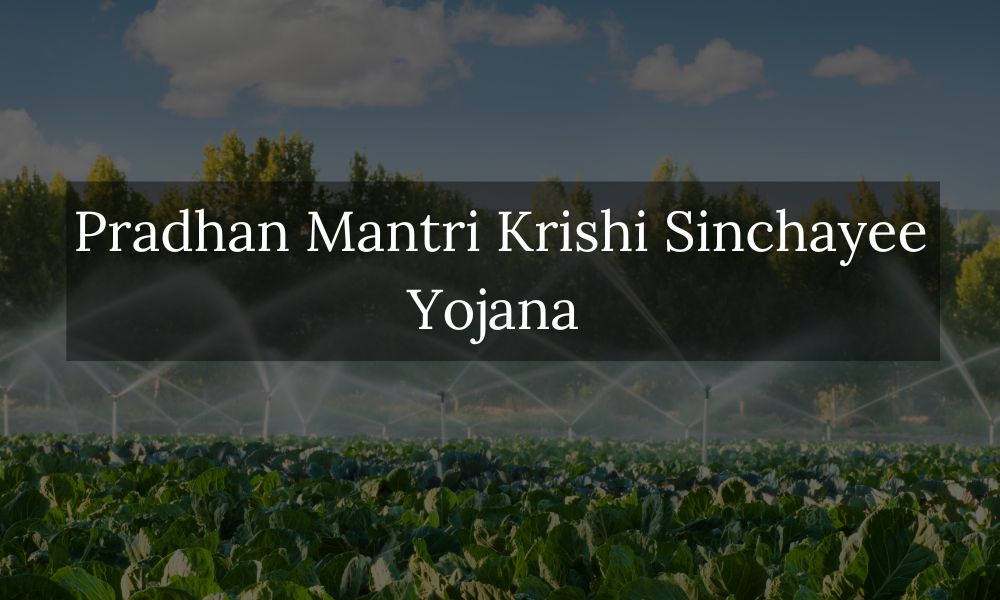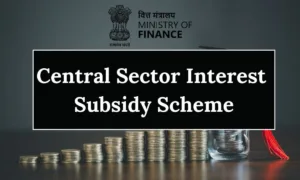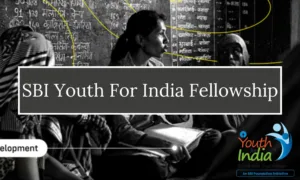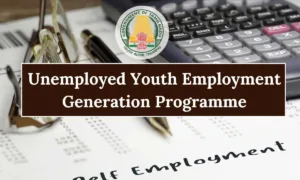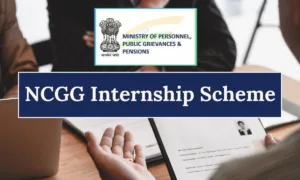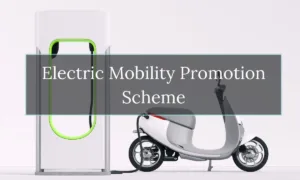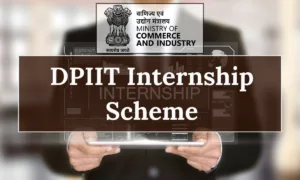The Government of India has demonstrated a strong commitment to prioritize water conservation and its effective management. In line with this commitment, the Pradhan Mantri Krishi Sinchayee Yojana (PMKSY) was formulated with the vision of extending irrigation coverage to ‘Har Khet ko pani’ (water to every field) and enhancing water use efficiency to achieve ‘More crop per drop.‘ This program is designed to address all aspects of water management, including source creation, distribution, management, field application, and extension activities. In this article, we are going to talk about the PMKSY Scheme in detail. In case you have any doubts regarding the scheme, you can comment to us and we will get back to you as soon as we can. This article will be useful for the UPSC, SSC, and Banks exams as well.


What is Pradhan Mantri Krishi Sinchayee Yojana Yojana?
The Pradhan Mantri Krishi Sinchayee Yojana (PMKSY) 2023 is a significant initiative of the Indian Central Government designed to enhance irrigation accessibility for every farm and improve water utilization efficiency in agriculture. Launched in 2015, this scheme operates with a clear vision of ensuring “Water to every field” and achieving “More Crop Per Drop.” PMKSY comprises two primary components: the Accelerated Irrigation Benefit Program (AIBP) and Har Khet Ko Pani (HKKP).
The PMKSY program encompasses a range of interventions, including micro-irrigation, watershed development, command area development, surface minor irrigation, as well as the repair and restoration of water bodies, while also fostering synergy with other related programs. It offers financial support to states for the creation of irrigation infrastructure and the promotion of water conservation practices.
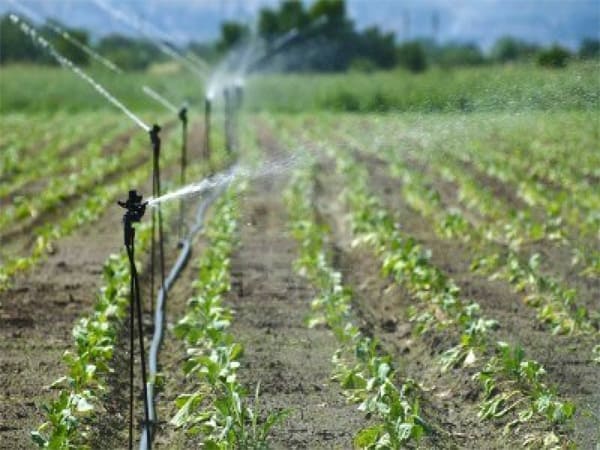
Additionally, the scheme has established a dedicated Micro Irrigation Fund (MIF) under the National Bank for Agriculture and Rural Development (NABARD) to facilitate the expansion of microirrigation throughout the country. Ultimately, the PMKSY scheme aspires to realize the objective of achieving ‘more crop per drop’ by increasing the productivity and income of farmers.
The Cabinet Committee on Economic Affairs, chaired by the Hon’ble Prime Minister, approved the Pradhan Mantri Krishi Sinchayee Yojana (PMKSY) during its meeting on 1st July 2015.\
Pradhan Mantri Krishi Sinchayee Yojana Key Highlights
The Department of Agriculture and Farmers Welfare (DAC&FW) has been implementing the Per Drop More Crop (PDMC) scheme since the fiscal year 2015-16. PDMC primarily focuses on improving water use efficiency at the farm level by promoting micro irrigation, including Drip and Sprinkler Irrigation Systems. In the year 2022-23, PDMC was integrated under the Rashtriya Krishi Vikas Yojana (RKVY).
| Pradhan Mantri Krishi Sinchayee Yojana 2023 Key Highlights | |
| Pradhan Mantri Krishi Sinchayee Yojana 2023 Launch Date | July 01, 2015. |
| Pradhan Mantri Krishi Sinchayee Yojana Official Website | Click Here |
| Pradhan Mantri Krishi Sinchayee Yojana Objective | To enhance irrigation accessibility for every farm and improve water utilization efficiency in agriculture. |
| Pradhan Mantri Krishi Sinchayee Yojana Components | Accelerated Irrigation Benefits Programme (AIBP)Har Khet Ko Pani (HKKP)Watershed DevelopmentPer Drop More Crop |
| Pradhan Mantri Krishi Sinchayee Yojana | Department of Agriculture and Farmers Welfare (DAC&FW) |
| Pradhan Mantri Krishi Sinchayee Yojana Budget 2021-26 | Rs. 93,068 crore |
| Pradhan Mantri Krishi Sinchayee Yojana Duration | 5 years (Initially)Extended to 5 more years |
| Pradhan Mantri Krishi Sinchayee Yojana Address | Department of Agriculture, Cooperation and Farmers Welfare,Ministry of Agriculture and Farmers Welfare, Krishi Bhawan, New Delhi – 110001. |
| Pradhan Mantri Krishi Sinchayee Yojana Helpline Number | 011-233824171. |
Pradhan Mantri Krishi Sinchayee Yojana Objectives
The primary objectives of the Pradhan Mantri Krishi Sinchayee Yojana (PMKSY) are as follows:
1. Facilitate the convergence of investments in irrigation at the field level, including the preparation of water use plans at the district and, if necessary, sub-district levels.
2. Improve farmers’ access to water in their fields and expand the cultivable area with assured irrigation (popularly known as “Har Khet ko pani”).
3. Integrate water sources, distribution systems, and the efficient use of water by employing appropriate technologies and practices.
4. Enhance on-farm water use efficiency to minimize wastage and increase the availability of water both in terms of duration and coverage.
5. Encourage the adoption of precision irrigation and other water-saving technologies with the goal of achieving higher crop yields with less water (often referred to as “More crop per drop”).
6. Promote the recharge of aquifers and the introduction of sustainable water conservation practices.
7. Ensure holistic development of rainfed areas using a watershed-based approach that includes activities related to soil and water conservation, groundwater regeneration, runoff control, livelihood opportunities, and other natural resource management activities.
8. Facilitate extension activities focused on water harvesting, water management, and crop alignment for the benefit of farmers and grassroots field personnel.
9. Investigate the feasibility of reusing treated municipal wastewater for peri-urban agriculture.
10. Attract increased private sector investments in irrigation infrastructure and related projects.
Pradhan Mantri Krishi Sinchayee Yojana Components
The Pradhan Mantri Krishi Sinchayee Yojana (PMKSY) comprises three main components that are implemented by different ministries as follows:
1. Department of Water Resources, River Development and Ganga Rejuvenation, Ministry of Jal Shakti:
- Component: Accelerated Irrigation Benefits Programme (AIBP)
- Component: Har Khet Ko Pani (HKKP)
- Sub-component: Command Area Development (CAD)
- Sub-component: Surface Minor Irrigation (SMI)
- Sub-component: Repair, Renovation and Restoration (RRR) of Water Bodies
- Sub-component: Ground Water Development
2. Department of Land Resources, Ministry of Rural Development:
- Component: Watershed Development
3. Department of Agriculture and Farmers Welfare, Ministry of Agriculture & Farmers Welfare:
- Component: Per Drop More Crop
Pradhan Mantri Krishi Sinchayee Yojana Components Objectives
The Pradhan Mantri Krishi Sinchayee Yojana (PMKSY) consists of several program components aimed at enhancing irrigation and water management. These components are as follows:
A. Accelerated Irrigation Benefit Programme (AIBP)
This component focuses on expediting the completion of ongoing Major and Medium Irrigation projects, including National Projects.
B. PMKSY (Har Khet ko Pani)
- Creation of new water sources through Minor Irrigation, encompassing both surface and groundwater.
- Repair, restoration, and renovation of water bodies.
- Strengthening the carrying capacity of traditional water sources.
- Construction of rainwater harvesting structures (known as Jal Sanchay).
- Command area development, including the strengthening and creation of distribution networks from the water source to the farm.
- Groundwater development in areas with abundant groundwater to create sinks for storing runoff/flood water during the rainy season.
- Improving water management and distribution systems for water bodies to make better use of available resources.
- Promotion of micro/precision irrigation, with a goal of covering at least 10% of the command area.
- Diversion of water from areas with surplus to water-scarce regions, using methods such as lift irrigation.
- Creation and rejuvenation of traditional water storage systems at feasible locations.
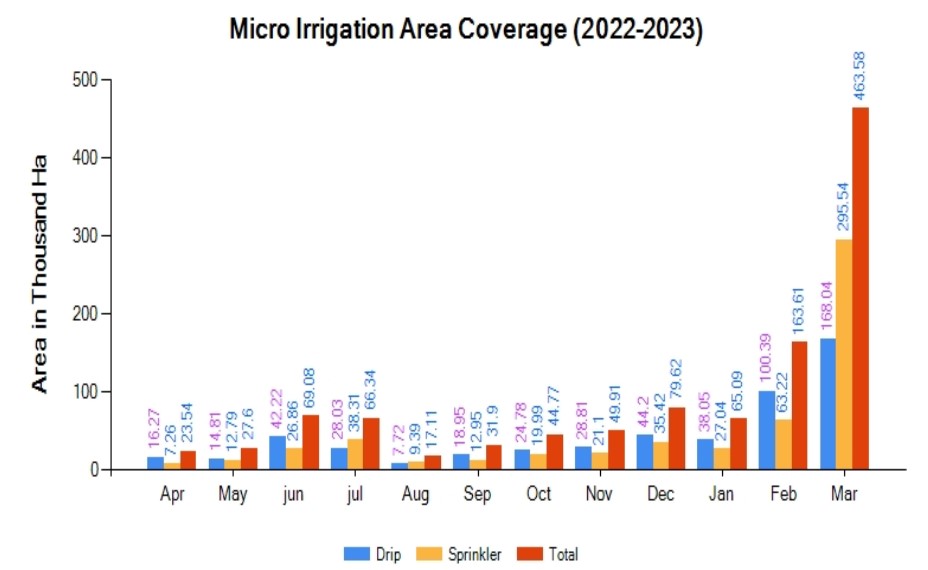
C. PMKSY (Per Drop More Crop)
- Program management, including the preparation of State/District Irrigation Plans, approval of annual action plans, and monitoring.
- Promotion of efficient water conveyance and precision water application devices like drip irrigation, sprinklers, pivots, and rain guns.
- Financial support for civil construction activities beyond the permissible limit (40%) under the Mahatma Gandhi National Rural Employment Guarantee Scheme (MGNREGS), specifically for tasks such as lining inlets, outlets, silt traps, and distribution systems.
- Construction of micro-irrigation structures to supplement source creation activities, including tube wells and dug wells, particularly in areas with available groundwater that is not categorized as semi-critical/critical/over-exploited.
- Establishment of secondary storage structures at the tail end of canal systems to store water during the rainy season or from perennial sources like streams for use during dry periods.
- Support for water lifting devices, including diesel, electric, and solar pumpsets, along with underground piping systems.
- Extension activities to promote scientific moisture conservation, agronomic measures, and cropping alignment to maximize the use of available water resources and minimize irrigation requirements.
- Capacity building, training, and awareness campaigns, including the use of low-cost publications, pico projectors, and low-cost films to encourage the adoption of water management practices.
- Empowering extension workers to disseminate relevant technologies after receiving proper training, especially in promoting moisture conservation and improved distribution systems.
- Utilizing Information Communication Technology (ICT) interventions to enhance water use efficiency, precision irrigation technologies, on-farm water management, and crop alignment, as well as for intensive monitoring of the scheme.
D. PMKSY (Watershed Development)
This component focuses on the effective management of runoff water and improving soil and moisture conservation activities at the watershed level. Activities include ridge area treatment, drainage line treatment, rainwater harvesting, in-situ moisture conservation, and other allied activities. Additionally, there is convergence with the Mahatma Gandhi National Rural Employment Guarantee Scheme (MGNREGS) to fully realize the potential of water sources in identified backward rainfed blocks, including the renovation of traditional water bodies.
Targets of Pradhan Mantri Krishi Sinchayee Yojana Components
The targets for the various components of the Pradhan Mantri Krishi Sinchayee Yojana (PMKSY) are as follows:
Accelerated Irrigation Benefit Programme (AIBP)
The targeted creation of additional irrigation potential during 2021-26 under AIBP is 13.88 lakh hectares. This includes the focused completion of 60 ongoing projects, with an associated 30.23 lakh hectare command area development. In addition to these projects, new ones will also be undertaken. The inclusion criteria for projects in tribal and drought-prone areas have been relaxed.
Central funding of 90% of the water component has been allocated for two national projects: the Renukaji Dam Project in Himachal Pradesh and the Lakhwar Multipurpose Project in Uttarakhand. These projects are expected to initiate the storage of water in the Yamuna basin, benefiting six states in the upper Yamuna basin. This development will augment water supply to Delhi, as well as to Himachal Pradesh, Uttarakhand, Uttar Pradesh, Haryana, and Rajasthan, marking a significant step toward the rejuvenation of the Yamuna river.
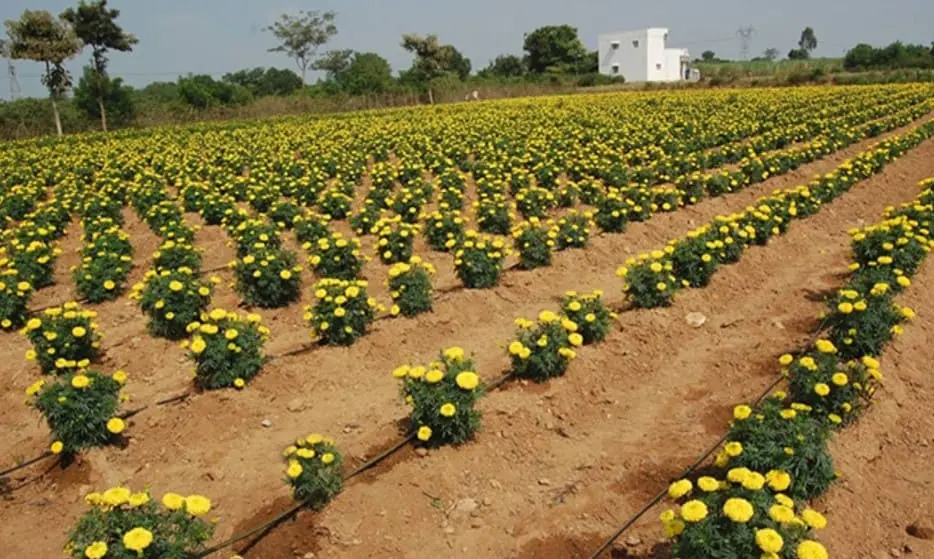
Har Khet Ko Pani (HKKP)
Under HKKP, the surface minor irrigation, and repair-renovation-restoration of water bodies component of PMKSY aims to provide an additional 4.5 lakh hectares of irrigation.
Recognizing the importance of rejuvenating water bodies, there has been a shift in funding for their restoration in both urban and rural areas. This includes a significant expansion of their inclusion criteria and an increase in central assistance from 25% to 60% in general areas.
The groundwater component of HKKP, provisionally approved for 2021-22, targets the creation of irrigation potential on 1.52 lakh hectares.
Watershed Development
The completion of sanctioned projects is expected to cover 49.5 lakh hectares of rainfed and degraded lands. This effort aims to bring an additional 2.5 lakh hectares under protective irrigation.
A specific provision has been made for the development of springsheds as part of the program, highlighting the importance of preserving and managing these water sources.
Pradhan Mantri Krishi Sinchayee Yojana Benefits and Features
Pradhan Mantri Krishi Sinchai Yojana (PMKSY) 2023 offers several benefits and features, including
1. Expanding Irrigation Coverage: PMKSY targets an increase in irrigation coverage by over 10 lakh hectares of land through the implementation of micro irrigation systems such as drip and sprinkler irrigation.
2. Protective Irrigation Potential: The scheme supports the creation of protective irrigation potential, covering around 0.04 lakh hectares of land through measures like rainwater harvesting, check dams, and farm ponds.
3. Water-Saving Technologies: PMKSY promotes the adoption of water-saving technologies and practices, such as fertigation, mulching, and crop diversification, which help improve water use efficiency in agriculture.
4. Financial Support: The scheme provides financial assistance to states and farmers for the execution of various irrigation projects under the Accelerated Irrigation Benefit Program (AIBP) and Har Khet Ko Pani (HKKP).
5. Scheme Convergence: PMKSY encourages the convergence of various schemes and programs from different ministries and departments related to water resources, agriculture, rural development, and more, ensuring a comprehensive approach to irrigation and water management.
6. Micro Irrigation Fund: The scheme establishes a Micro Irrigation Fund (MIF) under the National Bank for Agriculture and Rural Development (NABARD) to offer loans to states and farmers for micro irrigation projects, facilitating their implementation.
PMKSY is a visionary initiative with the goal of ensuring ‘water to every field’ and achieving ‘per drop more crop’ in a holistic manner. It is anticipated to enhance farmers’ productivity and income while also contributing to water conservation and environmental protection.
Pradhan Mantri Krishi Sinchayee Yojana Eligibility Criteria
The Pradhan Mantri Krishi Sinchai Yojana (PMKSY) is accessible to all farmers looking to enhance their irrigation systems and water utilization efficiency. Nevertheless, there are specific eligibility requirements that applicants must meet in order to avail of the scheme’s benefits. These include:
1. Land Ownership: Farmers must either own the land on which they intend to implement micro irrigation systems or undertake other interventions under PMKSY.
2. Tenant Farmers: Individuals farming on rented or leased land can also apply for the scheme, but they are required to obtain a no-objection certificate from the landowner.
3. Self-Help Organizations (SHOs) and Farmer Groups: Members of Self self-help organizations, productive farmer groups, trust cooperative societies, and similar entities can participate in the scheme upon PMKSY registration.
4. No Duplication of Benefits: Those who are already beneficiaries of other schemes or programs related to irrigation or water conservation can also join PMKSY, as long as there is no duplication of benefits.
PMKSY is an inclusive program that welcomes all farmers willing to embrace water-saving technologies and practices on their farms. It seeks to empower farmers by providing them with improved irrigation facilities and enhancing their water management skills.
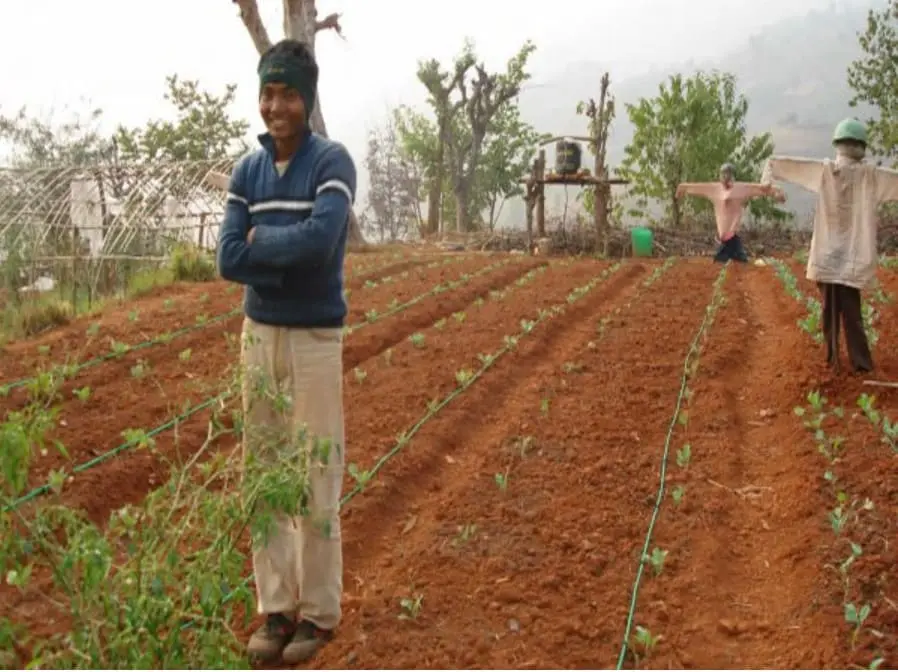
Pradhan Mantri Krishi Sinchayee Yojana Documents Required
To enroll in the Pradhan Mantri Krishi Sinchai Yojana (PMKSY), participants need to provide specific documents along with their application to confirm their eligibility and identity. These necessary documents include:
1. Aadhaar Card: This is a mandatory document for PMKSY registration, serving as proof of identity and address for farmers.
2. Caste Certificate: For reserved categories such as SC, ST, OBC, etc., a caste certificate is required to avail the benefits of PMKSY.
3. Proof of Address: A document validating the residential address of the farmer, which can be any valid document like a Voter ID card, Ration card, or electricity bill.
4. State Domicile Certificate: This document establishes that the farmer belongs to the same state where they are applying for PMKSY. It is issued by the competent state government authority.
5. Passport Size Photographs: Clear and up-to-date photographs of the farmer, which are affixed to the application form and other related documents.
6. Farm Documents: These documents demonstrate land ownership or lease for the land where the farmer intends to implement PMKSY. They may include land records, revenue receipts, and no objection certificates, among others.
7. Bank Account Passbook: This document displays the farmer’s bank account details, which is essential for the direct transfer of funds under PMKSY.
8. Mobile Number: The farmer’s contact number, which is used for communication and verification purposes within PMKSY.
Pradhan Mantri Krishi Sinchai Yojana Apply Online
To apply for the Pradhan Mantri Krishi Sinchai Yojana (PMKSY), the Prime Minister Agricultural Irrigation Scheme, interested farmers can follow a straightforward online application process by taking the following steps:
- Visit the official website of PMKSY at https://www.pmksy.gov.in/.
- On the homepage, click on the “Per Drop More Crop” tab, and select the “PMKSY-Micro Irrigation” option.
- If you already have an account, click on the “Login” button and provide your username and password.
- If you are a new user, click on the “Register” button, and complete the registration form by entering your personal details.
- After logging in, click on the “Apply Online” button. Fill out the application form with your personal information, including your bank details, land details, and irrigation specifics.
- Attach the required documents such as your Aadhaar card, caste certificate, proof of address, state residence certificate, passport-sized photograph, farm-related documents, and your bank account passbook.
- Review the information you’ve provided in the application form, and once satisfied, submit it online.
- After submission, you will receive an acknowledgment number for your reference.
- You can also track the status of your application by entering your acknowledgment number on the PMKSY website.
Pradhan Mantri Krishi Sinchai Yojana Contact Details
For inquiries or assistance related to the Pradhan Mantri Krishi Sinchai Yojana (PMKSY), there is a dedicated team of officials and experts available to help farmers and stakeholders. Here are the contact details for PMKSY:
Website: The official website of PMKSY. It serves as a comprehensive resource for information and updates about the scheme, including guidelines, application forms, status tracking, reports, and more.Email: You can reach out to PMKSY via email at [email protected].
Phone: 011-233824171.
Address: Department of Agriculture, Cooperation and Farmers Welfare,Ministry of Agriculture and Farmers Welfare, Krishi Bhawan, New Delhi – 110001.
These contact details are designed to facilitate communication and support for farmers and stakeholders interested in the PMKSY scheme.
